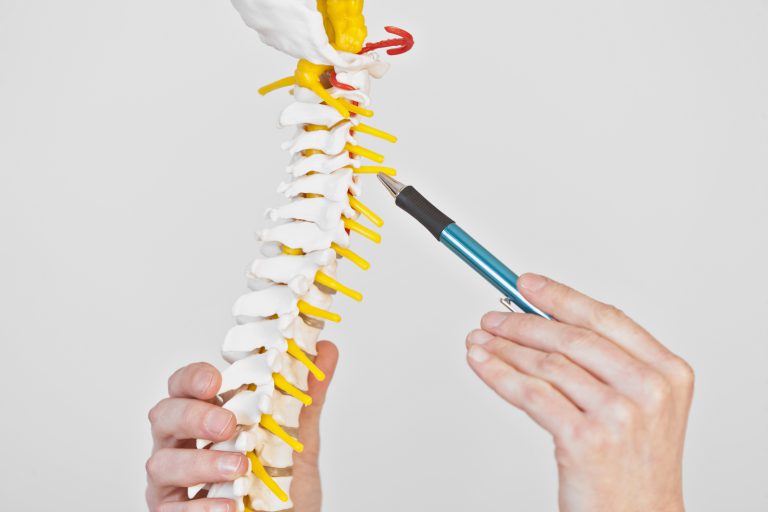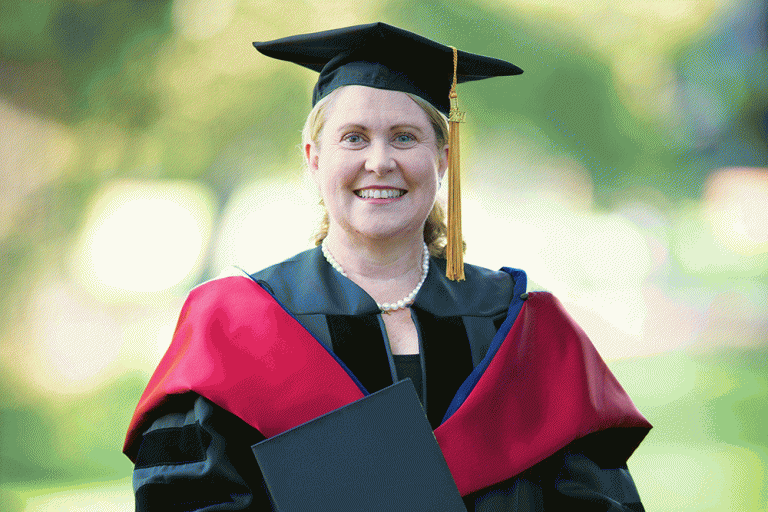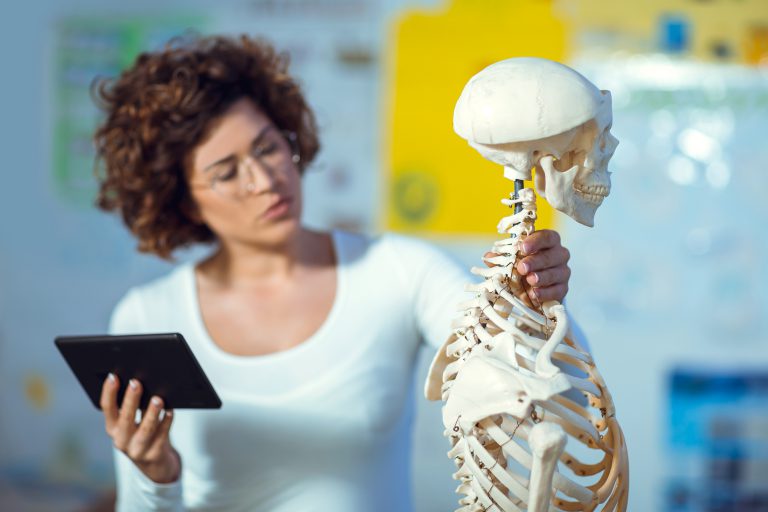Macquarie University researchers at the Department of Chiropractic have been awarded $2.1 million under the Medical Research Future Fund (MRFF) scheme. Successful grants were announced by The Hon Greg Hunt MP (Minister for Health and Aged Care) and includes researchers at the Department of Chiropractic and Health Professions, who have been awarded the grant to investigate whether patients with low back pain would benefit from team-based care by integrating chiropractors and physiotherapists into general practice clinics.
The MRFF is a $20 billion long-term investment supporting Australian health and medical research, set up by the Abbott government in 2015. This level of funding is a first for the chiropractic profession in Australia. The Australian Chiropractors Association is thrilled to be a partner in the research and is committed to supporting the study, which is expected to be a four-year project.
Deputy Head of Department and Director of Research, Prof Simon French is leading the research at the Department of Chiropractic (Macquarie University), alongside Prof Mark Hancock from the Department of Health Professions. Other investigators on the project include an academic general practitioner (Prof Simon Willcock, Macquarie University), Dr Katie de Luca (Central Queensland University), Dr Hazel Jenkins (Macquarie University) and specialist researchers from Australia and Canada with expertise in general practice, public health, physiotherapy, statistics and health economics.
Prof French says the department is absolutely thrilled by the grant “We’re really pleased with the success of this grant. It is a first for the chiropractic profession in Australia and it’s great news for our department, our research group, for the university at large and for the chiropractic profession more broadly…So we’re really pleased and excited for this project.”
Traditionally, funding for health and medical research in Australia has been through the National Health and Medical Research Council (NHMRC), which was established in 1926. The research funding that has been received is known as “category 1 funding” in Australia, which is a first for a department of chiropractic in Australia. Not only is this study groundbreaking, but importantly the money for the study has not come from practitioner donations, that has been a common source of funding for chiropractic researchers in the past, but from the Australian Government via the MRFF.
The study will examine whether a new model of care, integrating a musculoskeletal clinician (chiropractor or physiotherapist) within a primary care team (GP clinic), will improve the overall experience for people experiencing low back pain. Currently, GP clinics may or may not refer patients to outside practitioners once initially seen, which can end up being a lengthy and protracted process, and frustrating for many patients and practitioners alike. As Prof French explains, it is difficult for GPs to manage patients with back pain, as not only is back pain often a complex condition, but GPs typically don’t have enough time or training on this condition.
Through this proposed model a patient will be immediately referred to a chiropractor or physiotherapist through a model of team-based care. ‘Team-based care’ for this study will be when a chiropractor or physiotherapist is placed within a GP clinic and has a relationship with the GPs and other team members in the practice. Through a team-based care approach, rapport is built between practitioners and the process of referral is not only less disjointed, but saves the patient time, through getting a referral straight away.
Prof French calls this process ‘rapid referral’. In this project, the rapid referral process will enable patients to have the cost of two consultations with the musculoskeletal clinician covered by the grant. Therefore, the patient will have two free consultations with a chiropractor or physiotherapist as soon as possible. Follow up care will be provided as necessary, and the payment for these consultations will be determined based on the patient’s capacity to pay. As a result, the burden placed on the GP is mitigated and the musculoskeletal clinician will help the patient to navigate the healthcare system more efficiently.
Therefore, the clinician’s role will be to work with the patient to identify what their needs are, how bad the pain is, how the pain may be impacting their life, and then what they can do to best manage the patient’s pain.
How will the study be implemented?
The study will involve 20 primary care clinics in NSW. Ten of these clinics will be randomised to have a chiropractor or physiotherapist on site as part of the team-based care and ten will continue with usual GP care. The study will then compare outcomes of this new ‘team-based care’ model with those people who received GP care only. Macquarie University has two primary health care networks as partners, and these networks each have hundreds of clinics that they engage with and will assist in identifying those clinics that will be involved in the study.
How will the study outcomes be measured?
Patients will fill out a specialised questionnaire, which will measure a number of outcomes, including pain, function and level of disability over a 12-month period. Other outcomes, such as ‘healthcare utilisation’ will also be measured; this includes the prescription of drugs, whether surgery is sought and how many clinicians the patient sees for their back pain. Furthermore, a cost-effective analysis will also be conducted where the cost and benefits of care will be determined. The research project is estimated to take four years to complete with a breakdown of the research timeline below:
- Year 1 – Research and trial set up;
- Year 2 – Recruitment of clinics, clinicians, and patients;
- Year 3 – 12-month trial + following up of patients;
- Year 4- Wrap up and analysis.
What are the expected outcomes?
With this project, Prof French hopes to help patients to better navigate the current healthcare system, which is disjointed at best, and to influence healthcare policy. Chronic back pain is a huge issue. As Prof French says, “There are a lot of people who have back pain in the community, and sadly, it is affecting their quality of life quite significantly. This study will help GPs to provide this additional service to patients and the healthcare system will benefit. If we show that this team-based approach is more effective and cost-effective than the current approach, healthcare policy makers will take notice.”
Another key hope of the study is that it will also be able to mitigate the overuse of opioid drugs being prescribed to patients with chronic pain. In North America, there is an over prescription of opioids for patients with back pain, which is also a problem within Australia. Australia now has one of the highest levels of opioid utilisation globally. As Prof French states, by providing team-based care with treatment from a chiropractor or physiotherapist, this should lead to a minimisation of the drug being dispensed in the first place.
It is also hoped that earlier care from a chiropractor or physiotherapist will decrease the overuse of imaging, such as MRIs or CT scans. Through seeing a chiropractor or physiotherapist early in care, the clinician can efficiently and effectively sort out the patient’s challenges and what they require in terms of patient care, which by proxy, also minimises the pressure and time spent on GPs, as they can make referrals immediately.
As Prof French said: “What we’re expecting is that there will be benefits to the patient, because they will get better quicker, their pain will be relieved and the impact on their life will be improved. Also, the health system will benefit. The GP’s time will be saved (as they can refer the patient straight away), so there is less burden on the GP; and they can be busy with other patients and their complex needs, and the downstream health benefit is that it will be a more coordinated approach to these patients’ care.”
What is the long-term hope of the study?
The long-term hope for the study is that through rigorous testing, clinicians will be able to appeal to policy makers on a much larger scale and lobby for health system change, such as allowing chiropractic services to be available through Medicare. The study also aims to show policy makers that if patients experience less pain and use less healthcare resources in the long run, this will not only save time and pressure on GPs, but also save the economy in healthcare costs resulting from back pain.
Prof French states that this will be the first time such a study has been conducted in Australia and by doing so helps to improve the standing of the chiropractic profession “The Australian government has recognised that this is an important area to investigate, which raises the profile of the chiropractic profession more broadly…the benefit to the individual chiropractor is that the profession overall has a better reputation in the government’s eyes.”
The study will commence in January 2022.
References:
- Campbell G.,How is Australia responding to pharmaceutical opioid problem? Viewed 21 September 2021, UNSW National Drug and Alcohol Research Centre, < https://ndarc.med.unsw.edu.au/blog/how-australia-responding-pharmaceutical-opioid-problem>



